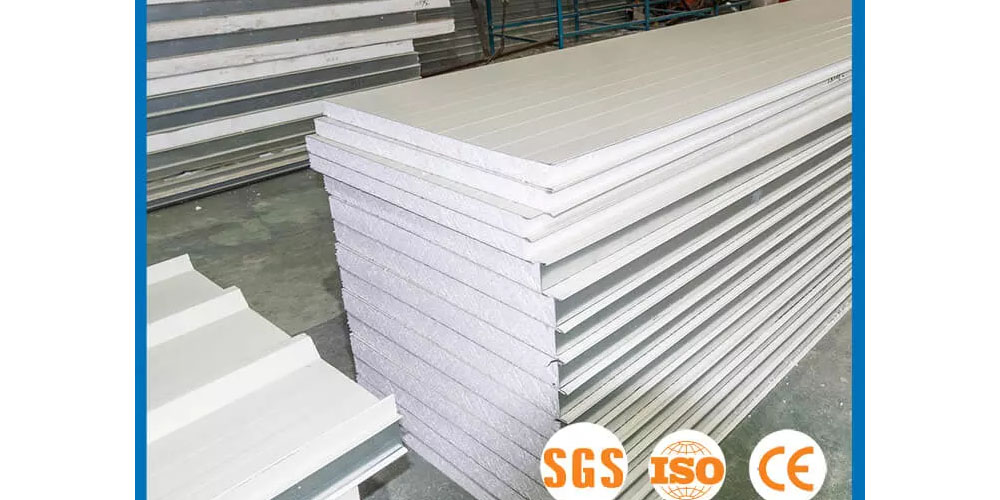An insulation panel is a board used to cover the spaces of a building to minimize heat transfer between the external and internal surroundings of a building. Insulation panels are used to cover small spaces like holes, cracks, and other hard-to-reach crevices within the structure of a building. This can be in the wall, floor, ceiling, or roof of a building. The market features a wide range of insulation panels, from waterproof wall panels to fire-retardant panels. Sandwich panels are the most common type. They also come in varying styles, including eps sandwich panels.
What are eps sandwich panels?
Before defining an eps sandwich panel, you should first understand what a sandwich panel is. A sandwich panel is comprised of three layers. The layers are all made using different materials. The middle part of the panel is usually the core material. It is in charge of the insulation properties of the sandwich panel. The term eps is a short form for polystyrene foam. Therefore, an eps sandwich panel features polystyrene foam as the core material. The other two parts are made up of metal plates. Steel is the most common type of metal used in eps sandwich panels.
Characteristics of eps sandwich panels
Below are some defining elements or characteristics of eps sandwich panels;
1. Heat insulation
Also known as thermal insulation, heat insulation refers to the process of preventing heat or thermal energy from escaping from a facility. This is usually done using insulation material. In eps sandwich panels, the insulation material is polystyrene foam. This material features impeccable heat insulation elements. It works by providing heat flow resistance. It, therefore, helps lower heating and cooling costs in different facilities. In residential facilities, heat insulation helps improve comfort and reduce energy costs.
2. Thermal resistance
Thermal resistance is the ratio of the temperature difference between two faces or parts of a material to the rate of heat flow. Thermal resistance determines the heat insulation elements of the material. Eps sandwich panels feature a high thermal resistance which means that the amount of heat loss is low. Naturally, the higher the thermal resistance, the lower the heat loss, and vice versa.
3. Fast construction speed
Eps sandwich panels are also easy to construct. The process of constructing and installing these sandwich panels does not include any wet operation. The panels are also aesthetically pleasing. Therefore, you need not waste time on decoration.
4. Lightweight
Additionally, eps sandwich panels are relatively lightweight. This is because they are constructed from lightweight sheets of metal. It is also because the core material, which is polystyrene, is also lightweight. Therefore, when using these sandwich panels, you do not have to worry about adding pressure to a building structure.
Conclusion
Note that polystyrene foam is a relatively modern form of insulation material. However, the insulation material has gained a lot of popularity since its introduction. This is because of the characteristics mentioned above. It is also because it is a load-bearing and waterproof type of insulation material. Lastly, Eps sandwich panels are also heat retardant.


